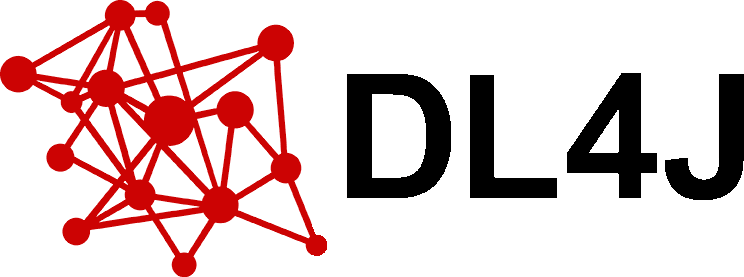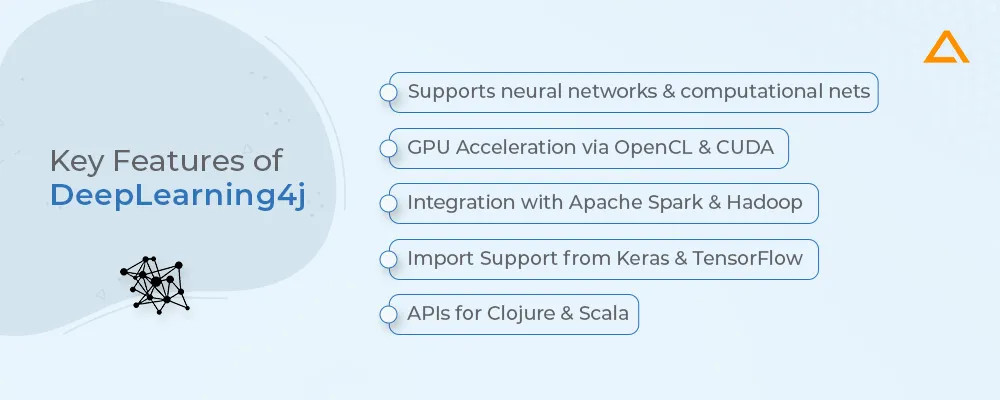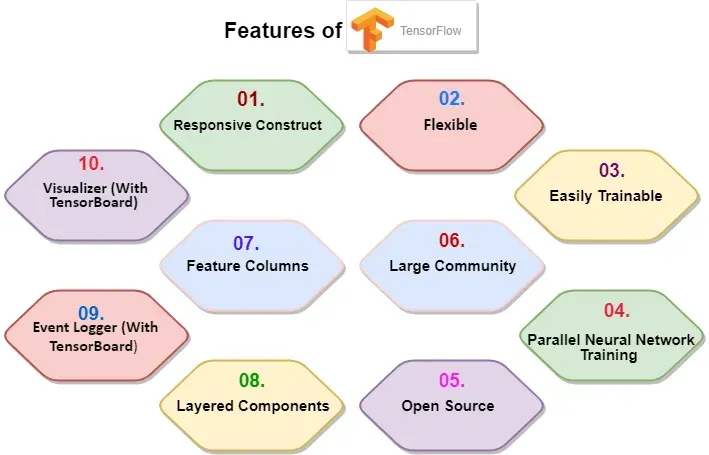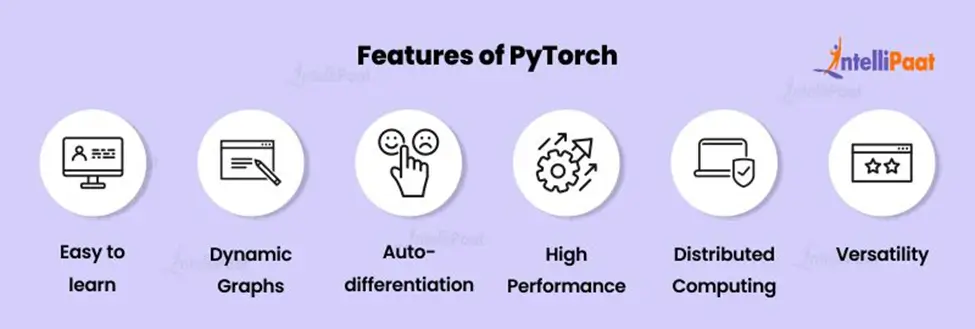Deep learning has revolutionized various fields, from computer vision and natural language processing to recommendation systems and predictive analytics. As the demand for deep learning solutions grows, developers and researchers have access to a wide range of frameworks and libraries to build and deploy sophisticated deep learning models. One such framework that has gained traction in recent years is DL4J (Deep Learning for Java).
DL4J is an open-source, distributed deep learning library written in Java and Scala, designed to integrate seamlessly with the Java ecosystem. According to a recent survey by Kaggle, DL4J was ranked among the top 10 most popular deep learning libraries used by data scientists and machine learning practitioners in 2022.
As the demand for deep learning solutions grows across industries, evaluating and comparing the available frameworks based on specific requirements and use cases becomes increasingly important.
In this context, a deeper understanding of DL4J's capabilities, strengths, and limitations relative to other popular deep-learning frameworks can help developers and organizations make informed decisions and choose the most suitable tool for their projects.
Let's dive in!
Key Factors to Consider When Choosing a Framework
Several factors should be considered when choosing a deep learning framework. Consider the language you are comfortable with, as some frameworks support multiple programming languages. Consider the level of community support and the availability of documentation and tutorials.
Evaluate the scalability and performance of the framework, especially if you are working on large-scale projects. Compatibility with your existing software systems is another crucial factor. By considering these factors, you can narrow down your choices and find the framework that fits your requirements.
Deep Dive into DL4J

Now, let's dive into DL4J and explore its functionalities, strengths, and potential limitations.
Overview of DL4J: Functionalities and Unique Features
DL4J, "Deeplearning4j," is a deep learning framework built for the Java programming language. It is designed to run on distributed computing infrastructure and supports a wide range of neural network architectures. DL4J offers extensive deep-learning functionalities, including natural language processing, computer vision, and time series analysis. Its compatibility with the Java ecosystem and ability to integrate with existing Java projects make it a popular choice for Java developers.
Strengths of DL4J: Advantages and Benefits for Specific Use Cases

DL4J has several strengths, making it a preferred framework for specific use cases.
- Efficient training and inference on large datasets through distributed computing.
- Support for multi-GPU systems for faster model training.
- Integration with Apache Spark for seamless big data processing.
- User-friendly API and comprehensive documentation for accessibility.
Potential Limitations of DL4J: Considerations for Users
While DL4J offers numerous benefits, it's essential to consider potential limitations.
- The learning curve for non-Java developers due to Java-based nature.
- Limited availability of pre-trained models compared to other frameworks.
- Extensive support for custom model architectures to compensate for this limitation.
Comparing DL4J with Popular Deep Learning Frameworks
Deep learning frameworks are like tools in a toolbox - they all have strengths and weaknesses. Let's compare DL4J with some popular ones to help you decide which framework fits your project best.
DL4J vs. TensorFlow: Comparing strengths, weaknesses, and suitability
P pitting DL4J against TensorFlow is like putting two champions in the ring. TensorFlow is like the old wise master, known for its flexibility and vast user base.
On the other hand, DL4J is the new kid on the block, built on Java, which is great for businesses already using Java. But the downside? It might have fewer tutorials or community support than TensorFlow.

DL4J vs. PyTorch: Examining key differences and ideal use cases
Think of PyTorch as the cool rebel in town - it's flexible, dynamic, and loved by researchers for its user-friendly nature. DL4J, on the other hand, prides itself on scalability and Java compatibility.
PyTorch might be your go-to if you're into swift prototyping and experimentation. However, if you need something sturdy for production with seamless integration into Java applications, DL4J could be your best bet.

DL4J vs. MXNet: Exploring advantages and limitations of both frameworks
MXNet is like the silent achiever in the group - known for its efficiency and great for multi-GPU setups. DL4J, focusing on enterprise use and Java integration, brings a robust and scalable solution.
If you're looking for multi-GPU support and performance, MXNet might be your choice. But if Java is your main language and seamless integration is necessary, DL4J could be your match made in heaven.
Suggested Reading:
Deep Learning Use Cases and Framework Suitability
Now that we've compared DL4J with other frameworks let's discuss matching your project requirements with the right framework.
Matching Your Project Requirements with the Right Framework
Before diving into deep learning frameworks, figure out what your project needs. Are you working on image recognition tasks that require vast resources and community support? TensorFlow might be your answer.
For quick prototyping in natural language processing, PyTorch could be your go-to. And if scalability and seamless integration into Java systems are non-negotiable for your business, DL4J is waving at you.
Considering Factors like Ease of Use, Scalability, and Community Support
Choosing the proper deep learning framework is like picking the perfect tool for a job. TensorFlow or PyTorch might be your cup of tea if you value ease of use and a strong community presence.
However, if scalability and integration with Java are top priorities for your project, DL4J might just be the missing puzzle piece. Remember, the ideal framework is the one that aligns with your project's needs and your team's expertise.
Advanced Topics: Integrating DL4J with Other Tools
Once you've decided to use DL4J as your deep learning framework, you may want to explore how it can be integrated with other tools and libraries to enhance its functionality and deploy models in the cloud. Let's take a closer look at these topics.
Connecting DL4J with Other Libraries and Frameworks for Enhanced Functionality
DL4J can be combined with other libraries and frameworks to expand its capabilities. For example, you can integrate DL4J with libraries like Apache Spark for distributed training and scalability. This allows you to train models on large datasets using multiple machines.
Another option is to connect DL4J with Hadoop, which provides a distributed file system and allows for efficient data processing. By combining DL4J with these tools, you can take advantage of their features while leveraging the power of DL4J's deep learning capabilities.
Exploring Cloud-based Deployments of DL4J Models
To deploy DL4J models in the cloud, you can leverage cloud services like Amazon Web Services (AWS), Microsoft Azure, or Google Cloud Platform (GCP). These platforms provide infrastructure and services that support DL4J deployments.
Utilizing cloud-based solutions allows you to take advantage of the scalability and flexibility offered by these platforms. Additionally, DL4J supports the ONNX format, allowing interoperability with other deep learning frameworks. This means you can train models in DL4J and then deploy them in cloud-based environments that support ONNX models.
Suggested Reading:
Machine Learning Development in Action: Real World Use-Cases
Real-world Examples of DL4J Applications
DL4J, the open-source deep learning framework for Java, has found numerous real-world applications across various industries. Here are some notable examples of how DL4J is being utilized in practical scenarios:
- Computer Vision and Image Recognition: DL4J's support for convolutional neural networks (CNNs) has made it a valuable tool for computer vision tasks, such as object detection, facial recognition, and image classification. Companies like Skymind, the primary contributors to DL4J, have developed solutions for security and surveillance applications using this framework.
- Natural Language Processing (NLP): With its capabilities in handling sequential data and recurrent neural networks (RNNs), DL4J has been employed for NLP tasks like sentiment analysis, text classification, and language translation. For instance, the South African startup Ntensify leverages DL4J to build intelligent chatbots and conversational AI solutions.
- Predictive Maintenance: DL4J's deep learning models have been integrated into predictive maintenance systems for industrial equipment and machinery. These models can predict potential failures by analyzing sensor data, identifying patterns, and recommending proactive maintenance actions, improving operational efficiency and reducing downtime.
- Fraud Detection: Financial institutions and payment processors have developed intelligent fraud detection systems using DL4J's anomaly detection capabilities. These systems can identify suspicious patterns and transactions in real-time, helping to mitigate financial risks and protect customers.
- Recommendation Systems: E-commerce platforms and media streaming services have leveraged DL4J's ability to build personalized recommendation engines. These systems can suggest relevant products, content, or services by analyzing user preferences and behavior patterns, improving user engagement and customer satisfaction.
These examples demonstrate the versatility of DL4J and its applicability across various domains. As deep learning continues to gain traction in enterprise environments, DL4J's native integration with Java and its robust feature set make it a compelling choice for organizations seeking to leverage the power of deep learning while maintaining compatibility with existing Java-based systems.
Conclusion
In conclusion, DL4J has carved out a niche as a powerful and versatile deep-learning framework, particularly for enterprises and organizations operating within the Java ecosystem.
While it may not have the same widespread adoption as some of the more popular frameworks like TensorFlow and PyTorch, DL4J offers several unique advantages that make it a compelling choice for certain use cases.
Furthermore, a survey conducted by the Eclipse Foundation in 2022 revealed that DL4J is among the top 10 most widely used deep learning frameworks in the enterprise sector.
As deep learning continues to evolve and find applications in diverse domains, DL4J's ability to leverage the strengths of the Java ecosystem, coupled with its comprehensive set of features and active community support.
Suggested Reading:
Frequently Asked Questions( FAQs)
How does DL4J differ from popular deep learning frameworks like TensorFlow and PyTorch?
DL4J, TensorFlow, and PyTorch all have unique features and strengths. DL4J focuses on Java compatibility, distributed computing, and seamless integration for enterprise-level applications.
What advantages does DL4J offer over TensorFlow and PyTorch?
DL4J's Java-centric approach provides benefits like easy integration with existing Java codebases, efficient distributed computing, and extensive support for data preprocessing and model deployment.
Does DL4J have a user-friendly interface similar to Keras in TensorFlow?
DL4J offers a user-friendly API called Deeplearning4j, which simplifies the process of building and training deep learning models, making it comparable to the ease of use offered by Keras in TensorFlow.
How does DL4J perform in terms of speed and accuracy compared to other frameworks?
DL4J is optimized for scalability and distributed computing, delivering competitive performance on large datasets and parallel processing capabilities that are on par with other top deep learning frameworks.
Can DL4J be used for both research experimentation and production-level applications?
Absolutely! DL4J serves researchers and production environments alike. Its flexibility and scalability make it suitable for developing, training, and deploying deep learning models in various applications and real-world scenarios.


